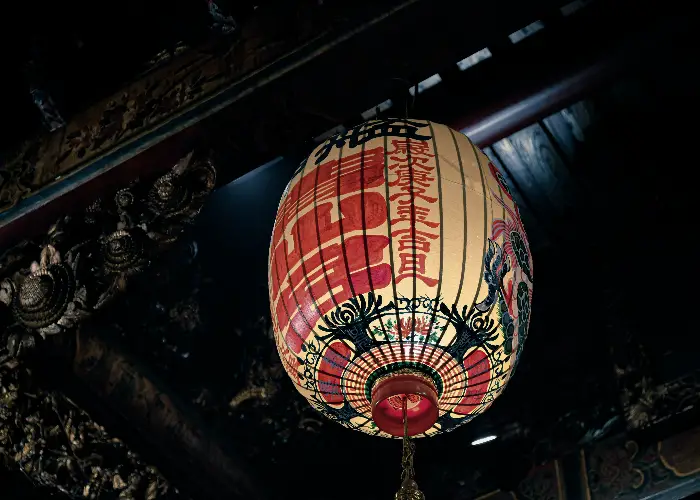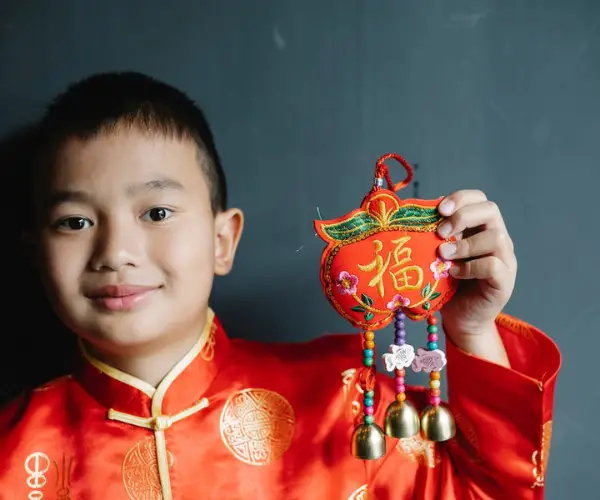Introduction: Unveiling Feng Shui Taoism
Have you ever entered a space that just didn’t feel quite right, but you couldn’t put your finger on why? Now, imagine the opposite. Ever walked into a room and instantly felt calm and at ease? The energy and harmony of an environment can profoundly affect our well-being.
What if I told you there’s an ancient philosophy, deeply rooted in Taoism, that could help transform your living and working spaces into sources of balance, positivity, and prosperity? It’s not magic or mysticism – it is Feng Shui Taoism.
As intricate as these notions may seem to some unfamiliar with them, this blog post will act as your guiding compass. We’ll delve deep into how principles from over thousands of years can still resonate today. Get ready to dive headfirst into Feng Shui Taoism: everything from its mystical roots to practical applications for daily life awaits!

Taoism: The Foundation of Feng Shui
Most people have heard of Feng Shui, but not everyone is aware that it sprouted from the fertile ground of Taoism. This Chinese philosophy has been around for over 2,500 years and emphasizes living in harmony with Tao (literally translated as “The Way”), which is seen as the natural order of the universe.
Taoists believe that everything in existence has two opposing yet intimately connected aspects: Yin and Yang. They stand for passive and active forces respectively – the light and dark, soft and hard, feminine and masculine forces that permeate all life.
How does this relate to Feng Shui? Simply put, Feng Shui can be viewed as Taoism expressed visually through your surroundings. It’s about aligning your living or working environment with these universal principles – creating balance between yin (quiet/still) areas meant for rest or reflection with yang (active) spaces intended for energetic activities.
Remember those five elements we often associate with Feng Shui – Wood, Fire, Earth, Metal, Water? This comes straight from Taoism too. Called Wu Xing or Five Phases theory in Taoist philosophy; each element represents distinct energies found in Nature which continually interact with one another throughout cycles of creation&destruction strictly following particular sequence called productive/controlling cycle – a cornerstone principle applied meticulously within feng shui practices.
So there you have it- closely interwoven strands making up fabric of good feng shui practice are underwritten by robustly deep-rooted tenets of ancient Taoist knowledge!
Understanding the Taoist Philosophy in Feng Shui
To truly grasp Feng Shui, one must understand the core Taoist beliefs that underpin it. In Taoism, the concept of chi or qi holds central importance. Translated to ‘life force’, chi is seen as the vibrant energy that flows through everything – animate or inanimate.
In a practical context of feng shui, it signifies the invisible forces that bind the universe, earth and humanity together. A well-balanced and harmonious flow of chi within your surroundings fosters positivity and prosperity while misdirection or blockage can create adverse effects.
Another vital aspect is Yin-Yang theory; it forms foundation not just for understanding good-bad polarity but also transcends into rule-of-thumb guidelines aligning spatial design to universal harmony/diversity- for instance – strategically placing objects around your home to balance areas with excess yin (passive) energy by adding yang (active) elements.
Finally, there’s Wu Xing–the Five Elements theory – It describes interactions and relationships between phenomena; traditionally water nurtures wood, wood fuels fire, fire forms earth (ash), earth bears metal & metal collects water- completion of this cycle symbolizes harmony. Therefore having representation from all these elements creates a balanced environment that promotes wellbeing & averts negativity.
So whether you are simply rearranging furniture or planning an architectural layout; Understanding Taoist philosophy gives you a roadmap to generate positive qi circulation regarding how space influences our life aspects ranging from health, relationships to career prospects- thereby empowering us to captain own destiny!

Applying Feng Shui Taoism in Your Space
Ready to bring Feng Shui Taoism into your own environment? It’s about inviting positive chi and maintaining balance in your space. Let’s break this down into practical steps you can follow to harness the wisdom of Tao through feng shui.
Start by decluttering; an essential principle derived from Taoist teachings, promoting simplicity. Physical clutter disrupts chi flow, creates stagnant energy and may affect mental wellbeing.
Next identify the ‘commanding position’ for key pieces of furniture – especially your bed, desk and stove; these symbolize rest, work and health respectively in feng-shui lingo. The commanding position is diagonal farthest from door while facing it- allowing you to be aware & in control.
Now when decorating remember Yin-yang theory – balance high-traffic (yang) areas with serene quiet spots (yin), creating complementary zones conducive for different activities.
Integrate five elements through color schemes or objects around your home according to Bagua model (Feng Shui energy map of home). Metal could be represented by white colour or round shapes; Fire by red color or electronic appliances so on – each resonating a particular typeface relationship corresponding life aspect e.g., wealth/prosperity/happiness etc.
Remember Feng Shui isn’t ‘one-size fits all’ remedy but tailored based on individuals/needs since what works for one may not necessarily provide same results everybody else even within identical house floorplans- thus diligently observant mindset will prove beneficial insisting upon customizations!
Tools of Taoist Feng Shui: Bai Ze Tu and Lo Pan Compass
When embarking on your Feng Shui journey, two ancient tools stand vital in helping align with Taoist principles: the Bai Ze Tu and Lo Pan Compass.
The Bai Ze Tu, literally ‘chart of magical creatures’, is a comprehensive mythological bestiary used often in Taoist Feng Shui. Named after the wise mythical creature Bai Ze who shared knowledge of supernatural entities that influence our world, it serves as an allegorical guide to understanding varied niches of various species interacting amongst themselves within shared habitat weaving a metaphorical equivalent to tackling intimate complexities human urban landscape relationships hold.
On the other end lies Lo Pan compass- This isn’t your regular needle magnet; Instead it’s intricate multi-layered wheel-like device packed with Chinese astrological data. Packed within its rotating rings we find embedded information linking specific directionality to various earthly elements (As per Wu xing theory) alongside yin-yang balance & Kua numbers specific for individuals based on birth – all calculated aimed at optimizing universal energy flow throughout space around us.
Demystifying use these tools might feel overwhelming initially but being aware about their existence & understanding how fundamental they are within Taoist feng shui practice surely steps up curiosity gears!
Nonetheless keep in mind utilising these implements are typically reserved for certified Feng shui consultants as part extensive consultation process – which involves detailed surveys considering multiple variables before effectively harmonizing domestic or commercial spaces employing methodically thorough tidbits gleaned off from thousands years wisdom!

Practical Tips: How to Implement Taoist Feng Shui in Daily Life
Incorporating Taoist Feng Shui into your everyday life goes beyond mere home décor and can have profound effects on personal wellbeing. Here are some accessible ways to make the most out of these practices.
Firstly, ensure good energy flow; Open doors and windows when possible to let fresh air in. Consider using air-purifying plants indoors which contribute positively towards O2 levels.
Declutter regularly – Remember every item in your house carries energy, so remove items that no longer serve you or bring negative vibes – maintaining neat environment aids free-flowing positive qi.
Focus on balance – too much yin or yang is disruptive for chi harmony. Balance dark colours (Yin) with light ones (Yang), active areas with calm ones- creativity lies finding your unique balance!
Listen to nature’s soundscape – Birdsongs or rustling leaves can provide calming yin energy whereas urban humdrums traffic-rush transform into yang types resonating subtle reminders nature even within urban setups!
Involve all senses: A serenely tinkling wind bell could activate cozy corner while adding fragrant element using essential oils can amplify area’s overall feel.
Lastly, mindfulness plays key role truly making most Taoist Feng shui benefits- tuning-in subtleties how surroundings interact within self brings about consciousness-filled dialogue between one’s inner-world & external world thereby generating fulfilling alignment manifesting desired results!
FAQs about Feng Shui Taoism
Learning about Feng Shui Taoism can spark numerous questions. Let’s address some of the most commonly asked inquiries to expand your understanding.
Q: What is Chi in Taoist Feng Shui?
A: In its simplest form, Chi is considered life force energy that flows through everything in Taoist philosophy. Ensuring smooth flow chi is essential element maintaining harmonious living environment within Feng Shui.
Q: Can I apply Taoist Feng Shui principles myself?
A: Absolutely! While a professional can provide comprehensive advice, anyone can begin by decluttering, ensuring free-flowing air and light, balancing yin-yang elements & embracing five-element theory at home.
Q: Are certain objects good or bad for Feng Shui?
A: Rather than labeling as ‘good’ or ‘bad’, focus on how objects contribute towards balanced chi energy. If an item stirs discordant feelings or blocks natural flow within room – it might be negatively affecting feng shi setup.
Q: How important are colors in Feng Shui?
A: Colors play significant part in achieving well-balanced Yin Yang Energy because each color carries different vibrational frequency resonating to particular elemental entity- hence playing with color schemes specific areas based Bagua map positively influences corresponding life aspect!
Understanding these FAQs will place you solidly on path toward transforming your surroundings into spaces of positivity and balance as per traditional wisdom shared thousand years ago still holding relevance today!
Transform Your Life with Feng Shui Taoism: Conclusion
We’ve travelled an enlightening journey, exploring the depths of Feng Shui Taoism, its roots, principles and application. The transformative potential is enormous when you align your spaces according to this ancient philosophy.
From understanding the bedrock of Yin and Yang, to enhancing Chi flow in your home or office settings – each enhancement nudges us closer to tranquility and balance. The blend of Bai Ze Tu knowledge alongside direction expertise via Lo Pan compass can be a game-changer for interior design enthusiasts keen on authentic Feng Shui application.
Don’t fret if you’re just starting out – even small changes in decluttering, color balance or mindful living can set positive energy wheels in motion within one’s dwelling environment adding valuable contribution life’s aspects subtly yet surely
As we wrap up this immersive tour into Feng Shui Taoism’s world; Remember – it isn’t about perfection but consistent effort awareness how to harness potential abundance vitality hidden plain sight around us…A magical journey that continues unfold with every step towards balancing yin-yang energies around us…
Dare to transform your reality – Start experiencing harmony prosperity right where you are! Happy harmonizing!


Sign up